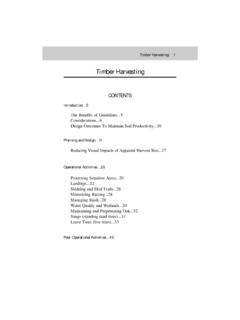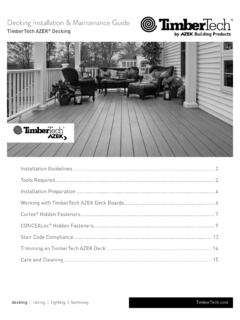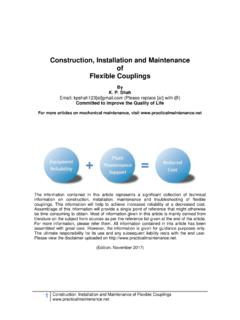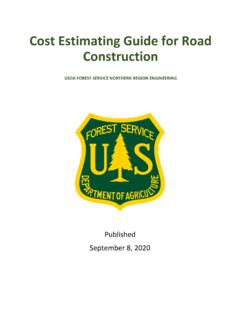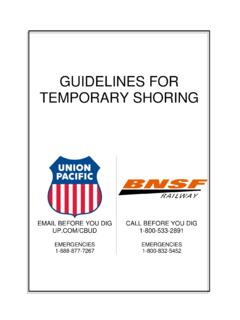Transcription of Forest Road Construction and Maintenance
1 Forest Roads 1 Forest RoadConstruction and Benefits of Outcomes To Maintain Soil Forest of Upland Forest and Activities That Do Not Require a DNR Protected Waters of Upland Forest Noise and Visual Impacts of Gravel Pits and Borrow Forest of Wetland Forest of Wetland Forest Construction Mineral Soil Shallow Peat Deep Peat Wetlands in AND CLOSING ALL Forest Measures for All Active Inactive Forest RoadsForest Roads 3 FIGURESFig. ROAD-1:Temporary ROAD-2:Crowned Road ROAD-3:High Water ROAD-4:Representations of Typical Slope and ROAD-5:Ice ROAD-6:Typical Road Profiles for Drainage and ROAD-7:Broad-Based Dip ROAD-8:Water Bar ROAD-9:Lead-Off ROAD-10:Developing Gravel Pits from Back to ROAD-11:Typical Upland Cross-Drainage ROAD-12:Typical Culvert Installation for Uplands and MineralSoil ROAD-13:Installation of Straw ROAD-14:Road Design for Peat Wetlands with ROAD-15:Deep Peat Wetlands Culvert and Ditch ROAD-16:Wetland Culvert ROAD-17:Peat Wetland Surface in Relation to Water ROAD-18:Barriers to ROAD-1:Cross-Drain Spacing for Broad-Based Dipsand Upland ROAD-2:Water Bar.
2 Guidelines help with how to manage,not whether to guidelines focus on how to protect the functions andvalues of Forest resources during Forest management do not provide advice on whether to manage or whichmanagement activities are provide a menu, not a resource management decisions are based on manydifferent factors, including resource needs, landowner objec-tives, site capabilities, existing regulations, economics and thebest information available at any given time. No one will applyall of the guidelines related to a particular activity. Instead,the landowner, resource manager or logger will consider manydifferent factors in determining which combination of guide-lines provides the best fit for a particular site at a particulartime.
3 The intent of having multiple guidelines is to providedecision-makers with as much flexibility and as muchchoice as possible in taking steps to effectively balanceforest management needs and resource guidelines and activity-specific guidelinesare closely references from activity-specific guidelines backto the general guidelines will make it easy for landowners,resource managers, loggers and others to consider all of therelated guidelines both general and specific that applyto a particular management are supplemented from time to timeby Additional Considerations. The guidelines are supplemented from time to time by Additional Considerations, which provide additional guid-ance to further promote the sustainability of Forest Forest RoadsINTRODUCTIONF orest roads connect the most remote parts of the forestto existing township, county and state roads and highways,providing access to Forest lands for timber management, fishand wildlife habitat improvement, fire control, hunting anda variety of recreational activities.
4 For the purpose of theseguidelines, road Construction includes excavation of gravelquarries and borrow roads are intended for long-term use. They includeall-season roads and seasonal roads. All-season roads are designed for use all year long, thoughthere may be some restrictions on vehicle weight at timesduring spring breakup or wet periods. There is a great rangein design standards and road surfacing in this type of road,depending on the traffic load anticipated. Seasonal roads are designed for long-term periodic use,such as during dry and frozen periods. These roads are builtto lower engineering standards and have minimal roads are generally minimum-standard roads designedfor short-term use during a specific project, such as a timberharvest.
5 Many of these temporary roads are little more thana bladed lane pushed into the harvest site. Use of these roads istypically limited to dry or frozen conditions to minimize ruttingand compaction. See Figure Benefits of GuidelinesBenefits to cultural resources: Forest road Construction guidelinescan minimize the potential effects of road building and mainte-nance activities on cultural resources that can result fromremoving or altering natural soils that contain cultural deposits,damaging features of archaeological sites or cemeteries, anddestabilizing historic buildings and Roads 5 Guidelines for earth-moving activities, excavation of borrowareas, and practices that cause soil disturbance or erosion canhelp protect cultural resources, and guidelines for controllingaccesses into formerly remote areas can reduce the potentialfor deliberate vandalism of sensitive to Forest soils.
6 Forest road Construction guidelinessupport the development of a safe and efficient access systemthat services many acres with as few roads as possible whileimpacting the smallest percentage of the site address compaction, erosion and indirect impactsto surrounding soils caused by disruption to water flows to riparian areas: Forest road Construction guidelinescan minimize alterations of vegetation within the riparian vegetation is important for providing inputs of coarsewoody debris and fine litter to water bodies; retaining nutrients,sediment and energy; bank and shoreline stabilization; mainte-nance of moderate water temperatures through shading; andwildlife habitat. Guidelines for retaining vegetation can also havea positive impact on aesthetics, wood products and ROAD-16 Forest RoadsTemporary RoadBenefits to visual quality: Forest road Construction guidelines canreduce the visual impacts associated with poor design, construc-tion and Maintenance of Forest roads.
7 Guidelines can also reducenoise and unsightliness related to gravel to water quality and wetlands: Forest road constructionguidelines can protect water quality and wetlands, particularly inareas having steep slopes with erodible soils, and in areas whereforest roads are located near water or wetlands. Guidelines canalso help to maintain natural flow patterns across the landscape,avoid concentration of water flows, and minimize sedimentationto water bodies and wetlands. Guidelines for the use of fuels andlubricants can protect water quality and wetlands from the toxiceffects of potential spills. Guidelines that address equipmentoperations and Maintenance can help protect water to wildlife habitat: Forest road Construction guidelinessuggest management approaches that help protect sensitive sites,rare species, water features and unique habitats in for controlling access into remote areas can minimizehuman activity that may be detrimental to some Forest well-planned access system is a sound method of reducingerosion and sedimentation in areas requiring frequent or tempo-rary access.
8 Proper location and Construction of roads willprovide for safety, longer operating periods, lower maintenanceand operating costs, and minimal impacts to Forest as many acres of Forest with as few roads as possibleis a sound method of reducing impacts to Forest resources fromroad in decision-makingr The number, size and design of Forest access roads will be influ-enced by the frequency of access, amount of anticipated traffic,seasons during which access is required, and safety Distribution of necessary management activities will affect thenumber and location of access Roads 7r Choices regarding road Construction standards and maintenanceactivities will be influenced by site characteristics and the valueof the resources served.
9 Culverts and ditches may be necessarywith any road Construction technique. See Figure Surfacing can be the major cost of low-volume road should be evaluated according to expected useand potential impact on sediment load. Where grades makethe potential for surface erosion significant, the road should besurfaced with materials that will minimize potential water qualityand soil productivity impacts (such as crushed rock, compactedgravel, sod or asphalt).r Visual impacts and the concentration of Forest management activitiescan result from poor design, Construction and Maintenance offorest access roads. Take into account the following considerationswhen planning to reduce noise and visual impacts associatedwith the design and use of Forest access roads.
10 Noise from traffic, especially large trucks, buses and heavyequipment operating on access roads Potential increased costs of building Forest access roadsto accommodate visual quality concerns, and potentialincreased costs of using existing roads that require travelinggreater distancesFigure ROAD-28 Forest RoadsCrowned Road Cross-Section The limited road Construction season that generally coincideswith the tourist season Traffic during wet periods that can increase maintenanceneeds and create unsightly ruts and mudholesr Visual impacts and noise impacts created by gravel pits are notcompatible with recreational user sensitivities. Take into accountthe following considerations when planning to reduce noise andunsightliness related to gravel pits: Local sources of gravel are necessary for efficient, cost-effective road building and Maintenance .

